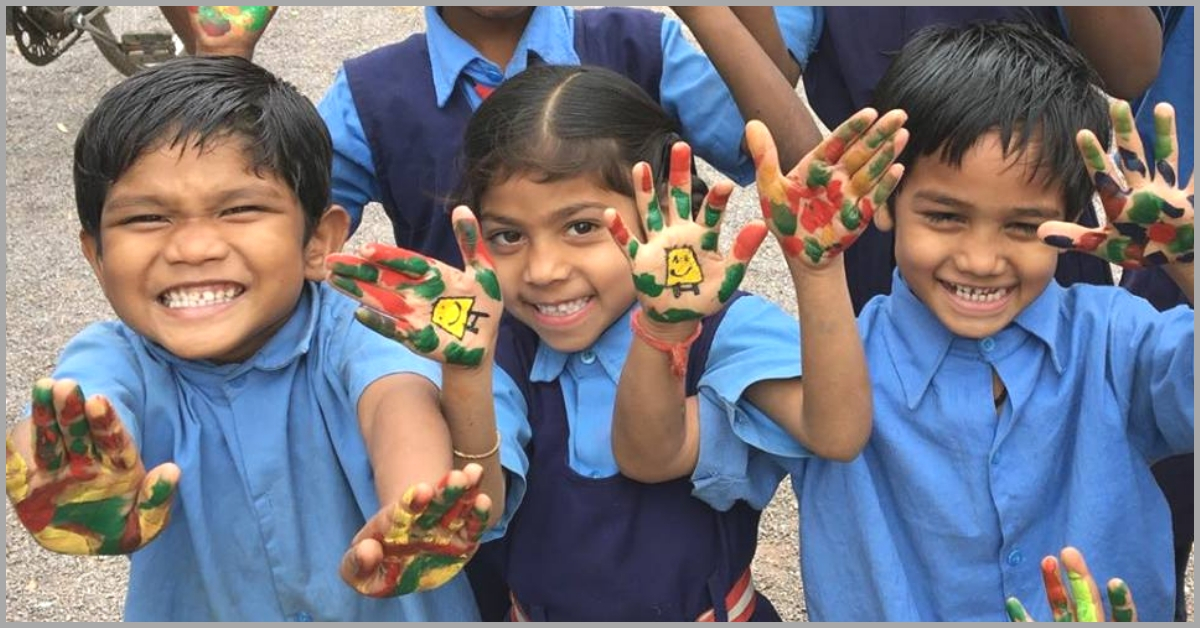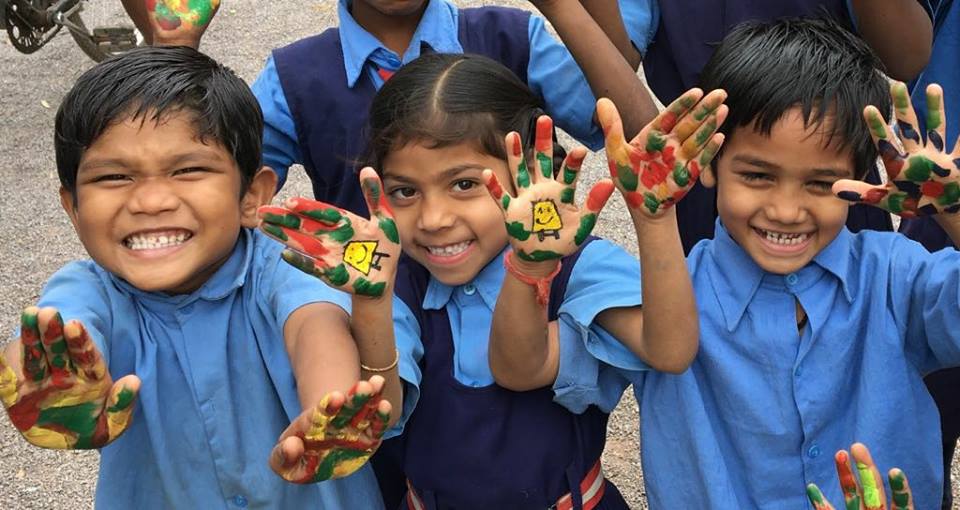Prayas to Porta-Cabins: Chhattisgarh’s Education Policies Are Re-Shaping The Future
Since achieving statehood in 2000, Chhattisgarh has come a long way in almost all sectors - ranging from technological and infrastructural development to digitisation and governance.

This article is sponsored by the Government of Chhattisgarh.
Despite having faced decades of adversity, particularly with Left-Wing Extremism (LWE), one area that the state has given focus to over the last 18 years has been Education.
Various path-breaking schemes and initiatives have been deployed by the state government to steer rural and tribal communities of Chhattisgarh from the evils of poverty, illiteracy and violence by identifying and applying intensive developmental measures provide quality education.
Read More: From ‘Nothing’ to Setting Benchmarks: How Chhattisgarh Revolutionalised Healthcare
To understand how the state has fared in its persistent efforts, we can start with the literacy rate of Chhattisgarh. At the dawn of the millennium, this rate stood at 30.2 per cent (as per the Human Development Report of Chhattisgarh 2005 report).
The national average at that time had been 64.7 per cent! The latest available report shows Chhattisgarh’s literacy rate at 70.28% (source: Census 2011).

The development deficit was due to many underlying factors such as accessibility, issues faced by villages, lack of basic infrastructures like roads and bridges, and weak penetration of communication technology.
An even greater deterrent were Left-Wing Extremists, whose attacks claimed the lives of many innocent villagers. Along with the gruesome murders, planned efforts were made to destroy schools and education centres frequently.
According to a 2014 report, nearly 86 primary and residential schools in the district of Dantewada catering the tribal communities were destroyed over the years as a result of these attacks.
Another related reason included the absence of teachers in such volatile regions, despite the provision of infrastructure as well as resources, owing to obvious risks to one’s life.
The state government formulated a series of meticulously planned initiatives – centred on not just taking educational opportunities to every corner of Chhattisgarh, but more importantly, help Naxal-hit region’s access facilities that were crucial to their subsistence and sustenance.
Also Read: Blazing Ahead: All You Need to Know About Chhattisgarh
Starting from the Prayas programme to the innovative Porta Cabin model, the plans have triggered a steady rise in the attendance of children in tribal regions as well as a reduction in the dropout percentage over the last few years.
Launched in July 2010, Prayas identified meritorious students from districts affected by LWE and other tribal areas and placed them in tribal hostels in Raipur, where they were imparted coaching alongside their regular studies at the higher secondary level.
The project was a definite success, and many students from the schools began to crack competitive exams like IIT JEE and were placed in top-tier colleges across the country.
‘Porta-Cabins’ a.k.a portable classrooms, can be attributed as one of the most successful initiatives unfurled by the Chhattisgarh government so far.

The scheme has managed to achieve significant breakthroughs in areas that were once considered out of bounds for the state. Since concrete structures were regularly attacked, the administration decided to install these cabins across all LWE districts in 2011 – with each having 500-seater capacity initially.
The advantage here was that these residential schools were made of prefabricated materials such as bamboo and plywood and could be dismantled in no time during dangerous situations. These also prevented the use of schools as hideouts or armed camps.
Besides providing a haven to stay and learn while drawing kids away from a life of violence and a problematic existence, these schools offer healthy and nutritious food to students.
Today, there are about 60 such schools successfully functioning across Chhattisgarh. The per-unit seating capacity has been brought down to 250 to reduce congestion.
An interesting aspect is that these schools have supposedly managed to ease the tension in certain LWE areas and the scheme has found acceptance from all sides.
Among the measures taken by Chhattisgarh towards reducing the skewed gender ratio among students, a significant one includes setting up numerous Kasturba Gandhi Balika Vidyalayas (KGBY) along with hostels for girls across the state, particularly in educationally backward blocks (EBB).
Undertaken by the Rashtriya Madhyamik Shiksha Abhiyan (RMSA) since 2009, each of these hostels has a vacancy of 100 students and has played a significant role in taking the literacy rate of women from an initial 51.7 per cent as per the 2001 Census, to 60.59 per cent in 2011.
You May Also Like: Atal Nagar, Raipur & Bilaspur: Chhattisgarh’s Smart Cities Are Redefining India
Another scheme that is bringing more girls to schools and colleges is the Saraswati Cycle Yojana, under which girl students from class 9 to 12 hailing from SC/ST and tribal communities as well as wards of BPL card holders have been provided with free cycles.
The main objectives of this scheme had been to ensure that these students continue their education beyond the level of primary classes, increase enrolment of girl children and reduce dropouts, especially in the age bracket of 14-18 at the secondary and senior secondary school levels.
The School Education department of Chhattisgarh is also actively pilot testing and implementing Information and Communication Technology (ICT) based Digital classrooms across government school. The objective is to make learning more engaging, intuitive and personalised through adaptive learning solutions.
The school education department is also gearing up to launch a Unified Digital System a few months from now, which aims to use technology to strengthen school management processes. It also plans to ease the accessibility of crucial data to every stakeholder at all critical levels of policy and decision making, besides creating learning platforms for both teachers and children.
More recently, the State had also launched a biometric-based school monitoring and data collection system through tablets under the banner ‘Shaalakosh’ across 47,000+ schools.
With the inclusion of such well conceptualised schemes and initiatives by the state, especially for marginalised communities, things have begun to look up for Chhattisgarh – especially in districts like Surguja, Koriya and Jashpur – which are now no longer classified as LWE districts.
The children of Chhattisgarh certainly seem to be leaving no opportunity behind, making the maximum from the opportunities being provided.
(Edited by Vinayak Hegde)
Like this story? Or have something to share?
Write to us: [email protected].
Connect with us on Facebook and Twitter.
If you found our stories insightful, informative, or even just enjoyable, we invite you to consider making a voluntary payment to support the work we do at The Better India. Your contribution helps us continue producing quality content that educates, inspires, and drives positive change.
Choose one of the payment options below for your contribution-
By paying for the stories you value, you directly contribute to sustaining our efforts focused on making a difference in the world. Together, let's ensure that impactful stories continue to be told and shared, enriching lives and communities alike.
Thank you for your support. Here are some frequently asked questions you might find helpful to know why you are contributing?


This story made me
-
97
-
121
-
89
-
167














